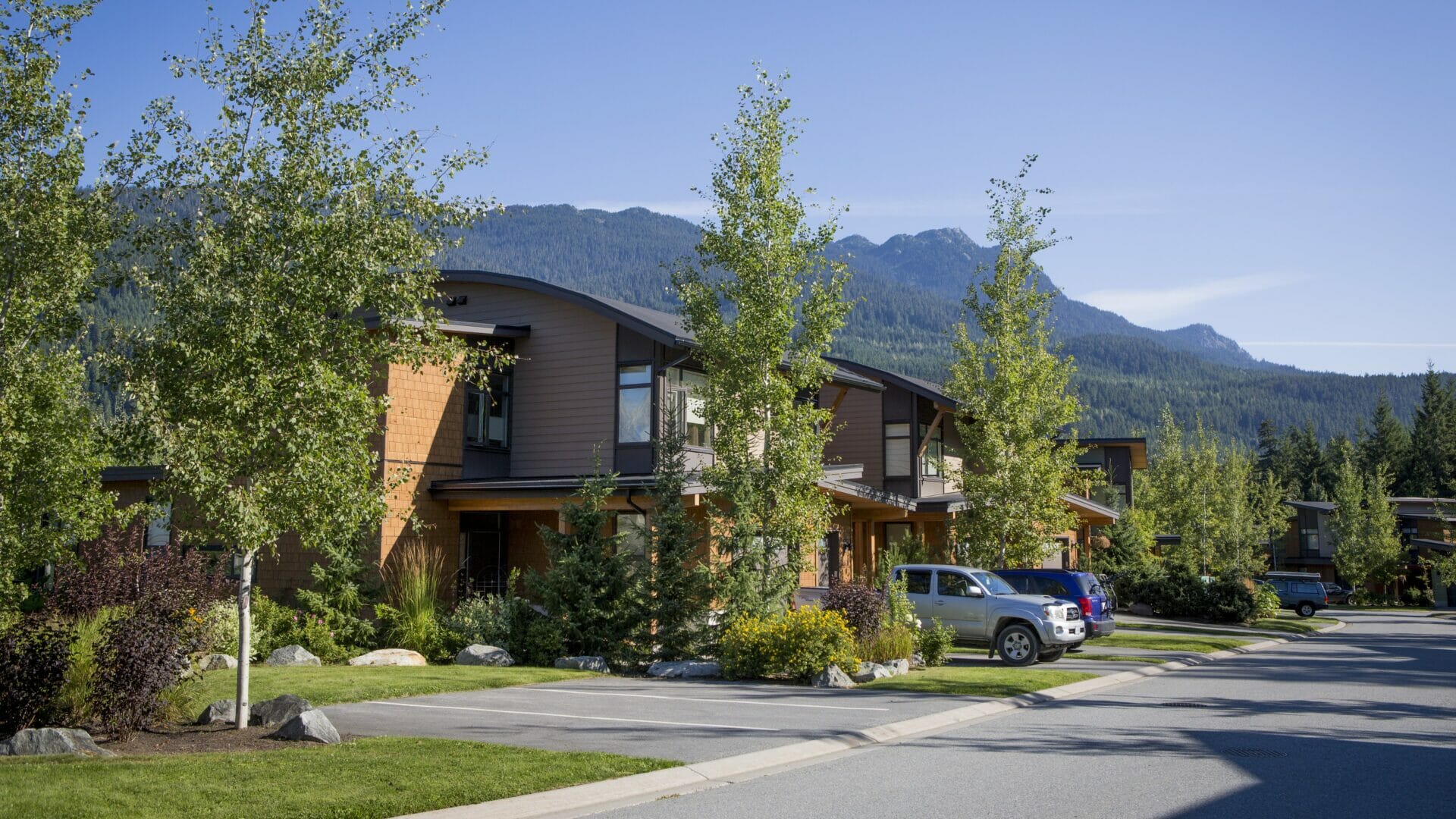
Cheakamus Crossing is a tangible legacy of the 2010 Winter Games. Not only was it home to more than 3,500 athletes and officials during the Games, the neighbourhood now provides much-needed affordable housing to Whistler residents with additional lands granted to the municipality by the Province for phased development overtime to meet the community’s housing needs.
This neighbourhood is home to a vibrant mix of residents, hostel visitors, and athletes. A model for sustainable living, the neighborhood is one of only 20 Canadian developments designated as a pilot project for LEED-ND (Leadership in Energy & Environmental Design – Neighbourhood Development). LEED-ND currently sets the highest standards in green neighbourhood design. The innovative neighborhood also includes a Certified Passive House apartment building owned and operated by the WHA.
Phase 1
Whistler 2020 Development Corporation partnered with the Whistler Housing Authority to develop Phase 1 of the neighbourhood, which features: 154 employee-restricted town homes, 67 employee-restricted condominiums, 151 WHA owned and managed employee-restricted rental units, 60 market town homes, a 110-bed hostel and 42 single family lots and duplex dwellings. In addition, the development includes a high performance training facility (featuring a 4000-square foot strength and conditioning gym, and a 5000-square foot gymnastics centre), an 100-room Athletes’ Lodge, and 20 athletes’ town homes owned and managed by Whistler Sport Legacies.
Phase 2
Phase 2 of the development is located at the southeast end of the existing Cheakamus Crossing neighbourhood, adjacent to the Cheakamus River and accessed via upper Mount Fee Road. Detailed planning and design for the proposed development has been underway since late 2018. The proposed site was identified as a priority site and catalyst project for the Cheakamus Crossing Phase 2 neighbourhood development, through the Master Planning work that was completed in 2017 and 2018.
Through 2019 the project underwent significant design development with reviews conducted by staff, and two reviews of the municipal Advisory Design Panel, on May 22, 2019 and November 20, 2019. Further detailed design, and coordination with the Mount Fee Road Extension, as well as parcelization plans for the Upper Lands, has been completed through the first part of 2020.
Phase 2 will include a mix of employee-restricted housing and market housing with zoning to allow for a daycare.
Parcel A, a portion of the “Upper Lands” reserved for the planned Phase 2 development of the Cheakamus Crossing neighbourhood lands has an approved Development Permit for the development of two 4-story apartment buildings with 100 employee-restricted rental units proposed to be located at 1340/1360 Mount Fee Road.
The Upper Lands recently received first and second reading for Zoning Amendment Bylaw (Cheakamus Crossing Phase 2 Parcelization) No. 2298, 2020.
More information about Zoning Amendment Bylaw (Cheakamus Crossing Phase 2 Parcelization) No. 2298, 2020 will be available on the Development Input Opportunities page beginning January 14.
Related Reports
- November 17: WDC presentation to Council on Parcel A update)
- December 1: WDC Parcel A Project Plan Update & Financing
- December 15: RZ1165 – Cheakamus Crossing Phase II – Zoning Amendment Bylaw (Cheakamus Crossing Phase II Parcelization) No. 2298, 2020, First and Second Reading
- September 15: DP1760 – 1340/1360 Mount Fee Road – Cheakamus Crossing Phase 2 – Parcel “A” Employee Housing and Road Extension
RMOW Partners
Whistler Development Corporation
To oversee the development of Cheakamus Crossing, the RMOW created the Whistler 2020 Development Corporation (WDC) and charged it with developing a Business Plan and the responsibility of planning and delivering a new community that would meet the needs and requirements of the athletes during the Games and, a permanent resident housing neighbourhood for the Whistler community following the Games.
Whistler Housing Authority
The Whistler Housing Authority (WHA) is an independent municipally owned corporation of the Resort Municipality of Whistler created to oversee the development, administration and management of resident restricted housing in Whistler. Embracing the goal of housing at least 75 per cent of employees locally within Whistler, the WHA continues to maintain and augment its inventory of resident restricted housing so that both rental and ownership accommodation are available and affordable for local income earners and retirees in perpetuity.
